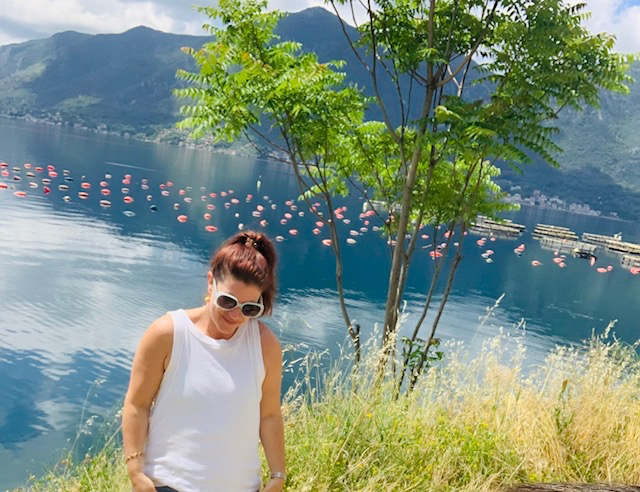What I love about the old town of Split is that it is the perfect place to wander historic alleyways, where you’ll find beautiful surprises in almost every corner. Known for its food, (the gelato is a must!) you will come across many charming little cafes, restaurants, and bars.
We had planned to meet a local celebrity chef at the charming Trogir green market for a market walk and shopping, but couldn’t due to the rain. Instead, we went to Chef’s private venue on the slopes of Mt. Kozjak, overlooking Split Bay and enjoyed exquisite food with wine pairing.
Split is also the perfect base for exploring national parks, visiting one of Croatia’s most spectacular beaches, and island hopping—which was next on my journey.
On the island of Hvar, I stayed at Maslina Resort. Just opened last summer, it’s in the UNESCO-protected town of Stari Grad, and is surrounded by a staggering 30,000-square-meters of olive groves and pine trees. Embodying the feel of “mindful luxury,” every detail of my stay felt like it had been designed to enhance the mental wellbeing of the guests.
We also stopped in Ston for one of the experiences I was most looking forward to: visiting the Oyster Farm. On a private tour with a local farmer, we learned how the oysters are grown while eating them fresh from the sea! We were also treated to a stop on his private island for mussels alla buzara, a traditional Dalmatian dish prepared with nothing but olive oil and local herbs, all topped with homemade rakija, similar to brandy.
My final stop in Croatia was Dubrovnik, the Pearl of the Adriatic. I can honestly say, now is the time to visit this city. There are no cruise ships, so crowds are less, and you can take advantage and walk the city walls. I suggest arriving early, around 8 am, and exploring the Old Town afterward. A must-do: Seek out Buza Bar in Old Town, a hidden gem on the side of a cliff, for sunset drinks.


